#launch system
Explore tagged Tumblr posts
Text

NASA's Space Launch System
9 notes
·
View notes
Text

late night talking with the king 🍂
#svsss#i wasn't supposed to post it before shop launch but i love them a lil too much so pls appreciate themmm#moshang#shang qinghua#mobei jun#fanart#mxtx#it's still summer rn but im craving the sweet colors of autumn very badly rn help#illustration#the scum villain's self saving system
7K notes
·
View notes
Text




Excess Fuel from SpaceX Falcon 9 creating a spiral vortex
l JayinKyiv (Ukraine) l Shu (U.K) l Nick Bull (U.K)
#spaceX#space#astrophotography#astronomy#nasa#night#stars#sky#rocket launch#falcon 9#galaxy#universe#solar system
599 notes
·
View notes
Text

my contribution to getting shadowpeach bio parents au trending @kyri45
#shadowpeach bio parents au#shadowpeach bio parent au#the post announcing the challenge used the singular but their tagging system uses the plural so??? both.#oh god now i have to think about main tags#lego monkie kid#monkie kid#lmk#lmk monkey king#lmk sun wukong#lmk mk#i mean hes the one tweeting and hes in the corner there its fine it counts#aaaaaaaand my tags for my blog#MK#Wukong#Sunburst Duo#2D Art#Funnies#AUs I Really Like#My Art#skygazing.txt#i might make more. i ended my digital art hiatus for this and ive MISSED IT#dude i havent done digital art since MARCH#dude. sketching traditionally has nothing on this#but yeah this is scheduled to post 5 minutes after the dec 6th update!#we'll see if i get my actual proper blog launched before then#or if this will be my first ''proper'' post xD
788 notes
·
View notes
Text
ALT: This video shows blades of grass moving in the wind on a beautiful day at NASA’s Michoud Assembly Facility in New Orleans. In the background, we see the 212-foot-core stage for the powerful SLS (Space Launch System) rocket used for Artemis I. The camera ascends, revealing the core stage next to a shimmering body of water as technicians lead it towards NASA’s Pegasus barge. Credit: NASA
The SLS (Space Launch System) Core Stage by Numbers
Technicians with NASA and SLS core stage lead contractor Boeing, along with RS-25 engines lead contractor Aerojet Rocketdyne, an L3Harris Technologies company, are nearing a major milestone for the Artemis II mission. The SLS (Space Launch System) rocket’s core stage for Artemis II is fully assembled and will soon be shipped via barge from NASA’s Michoud Assembly Facility in New Orleans to the agency’s Kennedy Space Center in Florida. Once there, it will be prepped for stacking and launch activities.
Get to know the core stage – by the numbers.

Standing 212 feet tall and measuring 27.6 feet in diameter, the SLS core stage is the largest rocket stage NASA has ever built. Due to its size, the hardware must be shipped aboard NASA’s Pegasus barge.

900 miles
Once loaded, the barge – which was updated to accommodate the giant core stage -- will travel 900 miles to Florida across inland and ocean waterways. Once at Kennedy, teams with our Exploration Ground Systems team will complete checkouts for the core stage prior to stacking preparations.

18 Miles + 500 Sensors
As impressive as the core stage is on the outside, it’s also incredible on the inside. The “brains” of the rocket consist of three flight computers and special avionics systems that tell the rocket what to do. This is linked to 18 miles of cabling and more than 500 sensors and systems to help feed fuel and steer the four RS-25 engines.

8.8 million
Speaking of engines… Our SLS Moon rocket generates approximately 8.8 million pounds of thrust at launch. Two million pounds come from the four powerful RS-25 engines at the base of the core stage, while each of the two solid rocket boosters produces a maximum thrust of 3.6 million pounds. Together, the engines and boosters will help launch a crew of four Artemis astronauts inside NASA’s Orion spacecraft beyond Earth orbit to venture around the Moon.

733,000 Gallons
Achieving the powerful thrust required at launch calls for a large amount of fuel - 733,000 gallons, to be precise. The stage has two huge propellant tanks that hold the super-cooled liquid hydrogen and liquid oxygen that make the rocket “go.” A new liquid hydrogen storage sphere has recently been built at Kennedy, which can store 1.25 million gallons of liquid hydrogen.

Four
The number four doesn’t just apply to the RS-25 engines. It’s also the number of astronauts who will fly inside our Orion spacecraft atop our SLS rocket for the first crewed Artemis mission. When NASA astronauts Reid Wiseman, Christina Koch, and Victor Glover along with CSA astronaut Jeremy Hansen launch, they will be the first astronauts returning to the Moon in more than 50 years.
Make sure to follow us on Tumblr for your regular dose of space!
964 notes
·
View notes
Text

second generation saturnian
#cazart#soft launch of new setting I suppose#more solar system focused and plausible-midfuture. tomorrow's country isn't going away though#the long view
284 notes
·
View notes
Text

"NASA Stennis Teams Install New Production RS-25 Engine for Upcoming Hot Fire
NASA marked a key milestone Feb. 18 with installation of RS-25 engine No. E20001, the first new production engine to help power the SLS (Space Launch System) rocket on future Artemis missions to the Moon.
The engine, built by lead SLS engines contractor L3Harris (formerly Aerojet Rocketdyne), was installed on the Fred Haise Test Stand in preparation for acceptance testing next month. It represents the first of 24 new flight engines being built for SLS flights, beginning with Artemis V.
In this image, teams at NASA Stennis deliver, lift, and install the first new production RS-25 engine on the Fred Haise Test Stand on Feb. 18."
Credit: NASA/Danny Nowlin
Date: February 18, 2025
Posted on Flickr by "NASA's Marshall Space Flight Center": link
#Artemis V#Artemis 5#Space Launch System#SLS#Rocket#Artemis program#NASA#Marshall Space Flight Center#MSFC#Huntsville#Alabama#February#2025#my post
80 notes
·
View notes
Text
NASA ∼ SLS ∼ NASM 🌎🚀🛰️🌌👨🚀
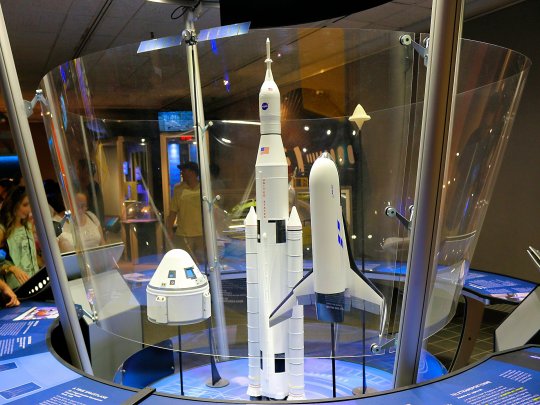
#Museum#Smithsonian#NASM#NASA#SLS#Space Launch System#Astronomy#Space#Science#Questacon#National Air and Space Museum#Independence Avenue#Washington D.C.
66 notes
·
View notes
Note
So people weren’t kidding when they said both Max and Charles deleted their highlights? Literally the only highlight up on his insta account is Leo’s. Everything else is gone.
yes. it is very strange indeed.
i thought maybe it’s a glitch in the system but does the glitch just apply to them?
like maybe they just archived them (which you can do) but isn’t peculiar that they would archive them at the same time? and wouldn’t they just archive specific ones?
i mean charles’ monza and monaco wins as well max’s wdc wins highlights are gone too?
honestly i’m not a conspiracy theorist (only as a joke) but if this isn’t a glitch it’s strange that their highlights disappeared at the same time.
for posterity:


has this happened to anyone else or just them?
#asks#lestappen#is this about lestappen gate?#lestappen hard launch?#a system glitch?#this is beyond crazy
41 notes
·
View notes
Text
I know for a fact I've talked about the golden records, but I don't care because here is a sample of some of my favourite greetings on those discs



There is something so vulnerable, precious, and human about sending up pieces of our hearts into space. Even when we know that there may not be anybody out there to hear us, we are still whispering to whomever might listen how much we love them, how much we want to connect. No matter how small the chance is, we're taking it to say that love is real, that we are real.
How is that not something to be in awe over?
#positivity#golden record#though it's been forty-seven years since launch both voyagers have just barely left our solar system#they are between 12-15 BILLION miles away from us#that's 20-24 BILLION kilometers away#i cant go to the club i need to cry uncontrollably about this#love is real#this is why i can never seriously consider apathy to be a poignant commentary about human nature#we never HAD to include this stuff - evidence of our love to completely inconceivable peoples#in fact if we learned anything from scifi maybe it would have been better for us not to say anything at all - to lead other life RIGHT TO US#but we couldn't shut up for five minutes to not say how much we love them and our planet and how enthusiastic we were that we MIGHT be found#we couldn't stop our hand from putting in *so much* effort for the 0.000000001% chance there's Something out there...#...for the chance that that 'something' will even be ABLE to retrieve AND understand our message of love#we absolutely need more golden records <3#to love something without even knowing anything about it .... there's nothing like that in the world#because i love whatever's out there. i think about them so often. i'll unironically pray for their health and safety#do they eat enough? do they look at the stars with wonder too? what's it like to breathe their air? do they know they're loved?
125 notes
·
View notes
Text





NASA's Vehicle Assembly Building (VAB), viewed from the Kennedy Space Center bus tour. Built for the Apollo program to complete the assembly of the Saturn V rockets, the building now plays host to the Artemis program's Space Launch System.
102 notes
·
View notes
Text
Though easily disabled, I am very ticked by NVDIA's brilliant 'automatically optimize games' setting, which I choose to read as
"Do you want your videogame vision to be randomly messed with by a malicious ghost?"
#At two different points it set STALKER:CS and DOOM Eternal in a way that made my whole system overheat and crash#Doom at least was like#STALKER is so confusing though?#it managed to macguyver a PC with an older game launched into a nuclear bomb somehow#then again
61 notes
·
View notes
Text

PROJECTILE LAUNCHER
#cyberpunk#robot#cyborg#scifi#character design#projectile launch system#ARENT THEY SO FUCKING COOL#cyberpunk 2077#cyberpunk aesthetic#my art#armed with da arm fr
560 notes
·
View notes
Text

Vulcan at sunrise l John Kraus
#vulcan#rocket launch#space#astrophotography#sky#astronomy#solar system#stars#planets#galaxy#universe#ULA#united launch alliance
680 notes
·
View notes
Text



My Danmei Deskmats Kickstarter is still live! And all the deskmat designs including Hualian, Bingqiu, and Xicheng have already been unlocked so any of them can be chosen now! The campaign ends in 3 days at 3/31 11:59 EST so it's the last couple days to pledge if you're interested~
Danmei Deskmats: TGCF and SVSSS Deskmats by Liramic — Kickstarter
I also got some sample pictures from my manu of the deskmats



#tgcf#tian guan ci fu#heaven official's blessing#hualian#hua cheng#xie lian#svsss#scum villain self saving system#scum villian self saving system#bingqiu#luo binghe#shen qingqiu#mdzs#mo dao zu shi#xicheng#jiang cheng#lan xichen#i totally didnt forget to promote this here after i launched it oops
29 notes
·
View notes
Text
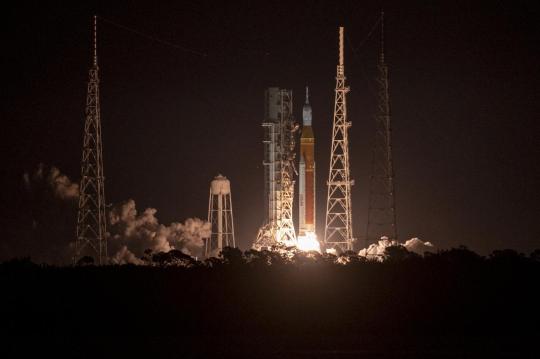
Moonbound: One Year Since Artemis I
On this day last year, the Artemis I rocket and spacecraft lit up the sky and embarked on the revolutionary mission to the Moon and back. The first integrated flight test of the rocket and spacecraft continued for 25.5 days, validating NASA’s deep exploration systems and setting the stage for humanity’s return to the lunar surface.

On Nov. 16, 2022, the Space Launch System (SLS) rocket met or exceeded all expectations during its debut launch on Artemis I. The twin solid rocket booster motors responsible for producing more than 7 million pounds of thrust at liftoff reached their performance target, helping SLS and the Orion spacecraft reach a speed of about 4,000 mph in just over two minutes before the boosters separated.
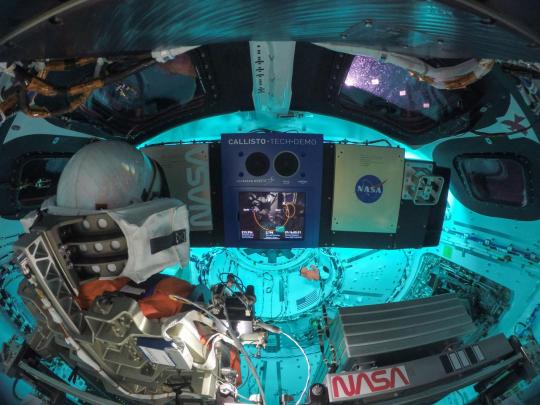
Quite a few payloads caught a ride aboard the Orion spacecraft on the Artemis I mission: In addition to a number of small scientific satellites called CubeSats, a manikin named Commander Moonikin Campos sat in the commander’s seat. A Snoopy doll served as a zero-gravity indicator — something that floats inside the spacecraft to demonstrate microgravity.
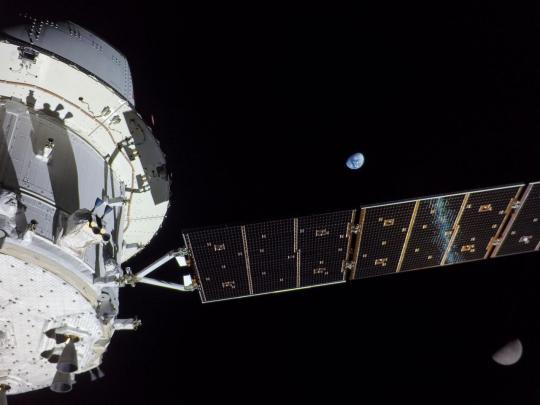
During the mission, Orion performed two lunar flybys, coming within 80 miles of the lunar surface. At its farthest distance during the mission, Orion traveled nearly 270,000 miles from our home planet, more than 1,000 times farther than where the International Space Station orbits Earth. This surpassed the record for distance traveled by a spacecraft designed to carry humans, previously set during Apollo 13.
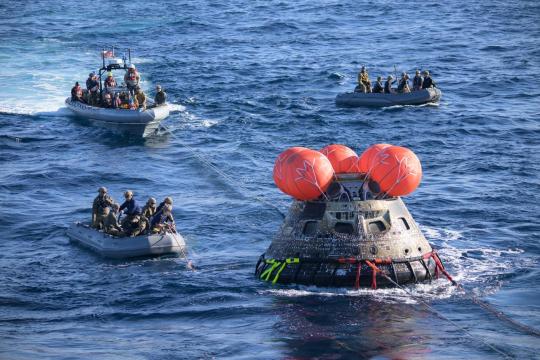
The Orion spacecraft arrived back home to planet Earth on Dec. 11, 2022. During re-entry, Orion endured temperatures about half as hot as the surface of the Sun at about 5,000 degrees Fahrenheit. Within about 20 minutes, Orion slowed from nearly 25,000 mph to about 20 mph for its parachute-assisted splashdown.

Recovery teams successfully retrieved the spacecraft and delivered it back to NASA’s Kennedy Space Center for de-servicing operations, which included removing the payloads (like Snoopy and Commander Moonikin Campos) and analyzing the heat shield.
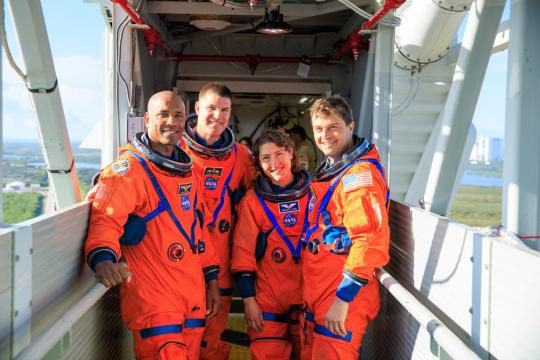
With the Artemis I mission under our belt, we look ahead to Artemis II — our first crewed mission to the Moon in over 50 years. Four astronauts will fly around the Moon inside Orion, practicing piloting the spacecraft and validating the spacecraft’s life support systems. The Artemis II crew includes: NASA astronauts Reid Wiseman, Victor Glover, and Christina Koch, and CSA astronaut Jeremy Hansen.
youtube
As we look ahead to Artemis II, we build upon the incredible success of the Artemis I mission and recognize the hard work and achievements of the entire Artemis team. Go Artemis!
Make sure to follow us on Tumblr for your regular dose of space!
#Artemis#Rocket#Anniversary#Launch#NASA#Space#Moon#Lunar#Astronaut#Apollo#Orion#Spacecraft#Space Launch System#STEM#science#tech#technology#on this day#Youtube
2K notes
·
View notes